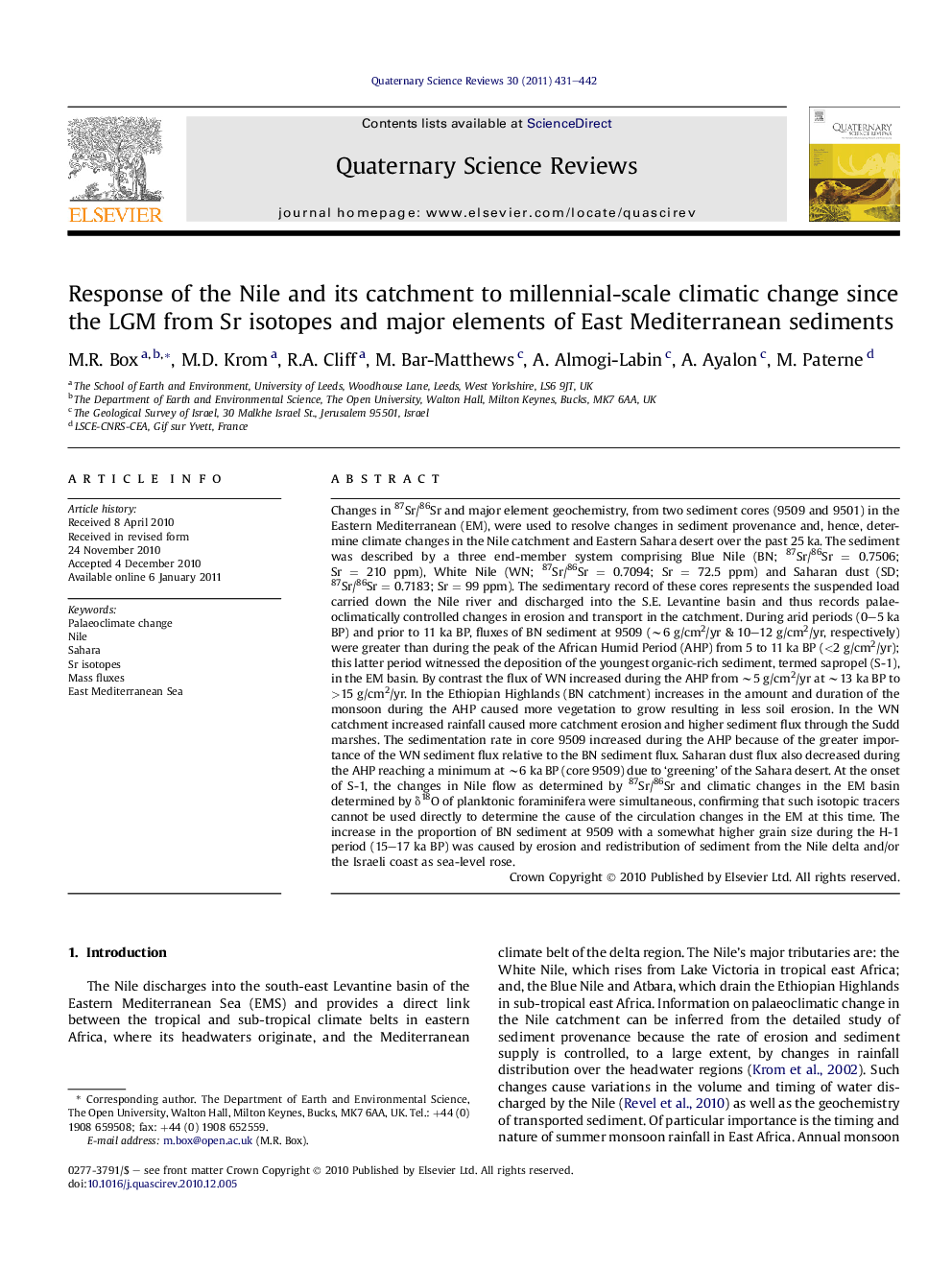| کد مقاله | کد نشریه | سال انتشار | مقاله انگلیسی | نسخه تمام متن |
|---|---|---|---|---|
| 4737041 | 1640916 | 2011 | 12 صفحه PDF | دانلود رایگان |

Changes in 87Sr/86Sr and major element geochemistry, from two sediment cores (9509 and 9501) in the Eastern Mediterranean (EM), were used to resolve changes in sediment provenance and, hence, determine climate changes in the Nile catchment and Eastern Sahara desert over the past 25 ka. The sediment was described by a three end-member system comprising Blue Nile (BN; 87Sr/86Sr = 0.7506; Sr = 210 ppm), White Nile (WN; 87Sr/86Sr = 0.7094; Sr = 72.5 ppm) and Saharan dust (SD; 87Sr/86Sr = 0.7183; Sr = 99 ppm). The sedimentary record of these cores represents the suspended load carried down the Nile river and discharged into the S.E. Levantine basin and thus records palaeoclimatically controlled changes in erosion and transport in the catchment. During arid periods (0–5 ka BP) and prior to 11 ka BP, fluxes of BN sediment at 9509 (∼6 g/cm2/yr & 10–12 g/cm2/yr, respectively) were greater than during the peak of the African Humid Period (AHP) from 5 to 11 ka BP (<2 g/cm2/yr); this latter period witnessed the deposition of the youngest organic-rich sediment, termed sapropel (S-1), in the EM basin. By contrast the flux of WN increased during the AHP from ∼5 g/cm2/yr at ∼13 ka BP to >15 g/cm2/yr. In the Ethiopian Highlands (BN catchment) increases in the amount and duration of the monsoon during the AHP caused more vegetation to grow resulting in less soil erosion. In the WN catchment increased rainfall caused more catchment erosion and higher sediment flux through the Sudd marshes. The sedimentation rate in core 9509 increased during the AHP because of the greater importance of the WN sediment flux relative to the BN sediment flux. Saharan dust flux also decreased during the AHP reaching a minimum at ∼6 ka BP (core 9509) due to ‘greening’ of the Sahara desert. At the onset of S-1, the changes in Nile flow as determined by 87Sr/86Sr and climatic changes in the EM basin determined by δ18O of planktonic foraminifera were simultaneous, confirming that such isotopic tracers cannot be used directly to determine the cause of the circulation changes in the EM at this time. The increase in the proportion of BN sediment at 9509 with a somewhat higher grain size during the H-1 period (15–17 ka BP) was caused by erosion and redistribution of sediment from the Nile delta and/or the Israeli coast as sea-level rose.
Journal: Quaternary Science Reviews - Volume 30, Issues 3–4, February 2011, Pages 431–442